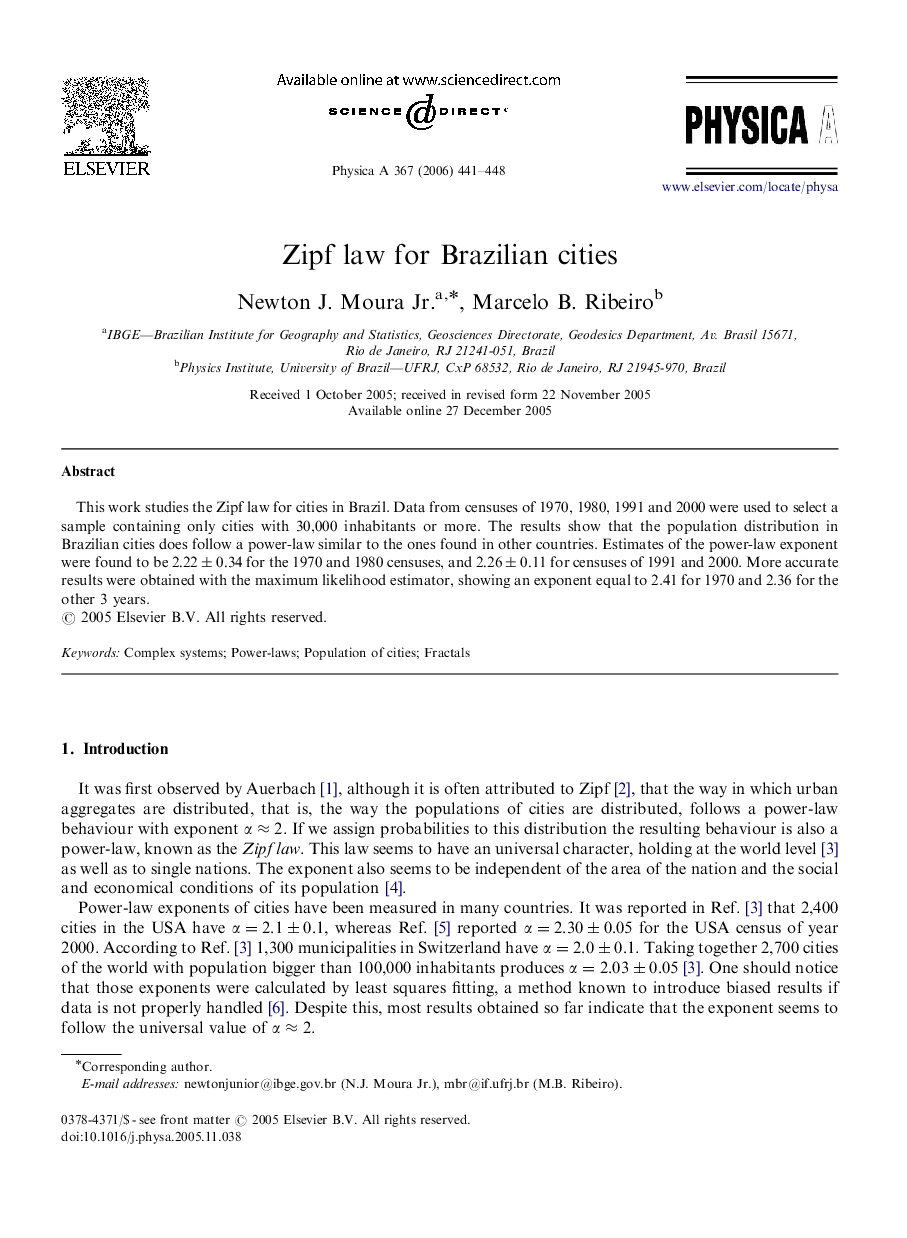| Article ID | Journal | Published Year | Pages | File Type |
|---|---|---|---|---|
| 977442 | Physica A: Statistical Mechanics and its Applications | 2006 | 8 Pages |
Abstract
This work studies the Zipf law for cities in Brazil. Data from censuses of 1970, 1980, 1991 and 2000 were used to select a sample containing only cities with 30,000 inhabitants or more. The results show that the population distribution in Brazilian cities does follow a power-law similar to the ones found in other countries. Estimates of the power-law exponent were found to be 2.22±0.342.22±0.34 for the 1970 and 1980 censuses, and 2.26±0.112.26±0.11 for censuses of 1991 and 2000. More accurate results were obtained with the maximum likelihood estimator, showing an exponent equal to 2.41 for 1970 and 2.36 for the other 3 years.
Keywords
Related Topics
Physical Sciences and Engineering
Mathematics
Mathematical Physics
Authors
Newton J. Moura Jr., Marcelo B. Ribeiro,
